Discover 9 hidden attractions, cool sights, and unusual things to do in Batley (United Kingdom). Don't miss out on these must-see attractions: Batley Town Hall, Mount Pleasant, and Bagshaw Museum. Also, be sure to include Wilton Park in your itinerary.
Below, you can find the list of the most amazing places you should visit in Batley (England).
Table of Contents
Batley Town Hall

Batley Town Hall is a municipal facility in the Market Place in Batley, West Yorkshire, England. It is a Grade II listed building.[1]
Mount Pleasant
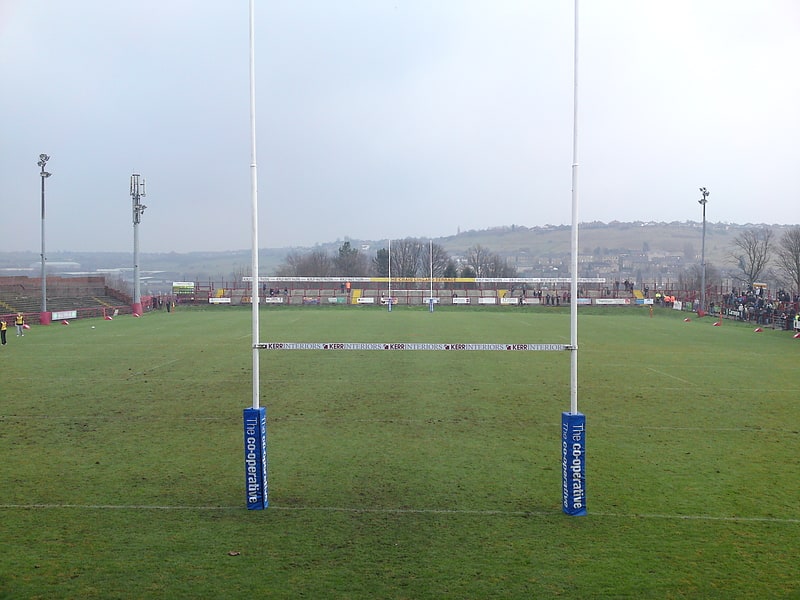
Stadium in Batley, England. Mount Pleasant stadium, officially known for commercial sponsorship purposes as Fox's Biscuits Stadium, is a rugby league stadium in Batley, West Yorkshire, England. It is the home of Batley Bulldogs.
The Mount Pleasant pitch is sloped and is on a hill overlooking Batley. The end of the ground at the top of the hill has three grandstands. Behind the rugby posts is a terraced stand, which houses the players changing rooms and executive boxes.
At the opposite end at the bottom of the hill is an open terraced stand. The bottom corner of the pitch has a pronounced dip.[2]
Address: Heritage Road, WF17 7NZ Batley
Bagshaw Museum
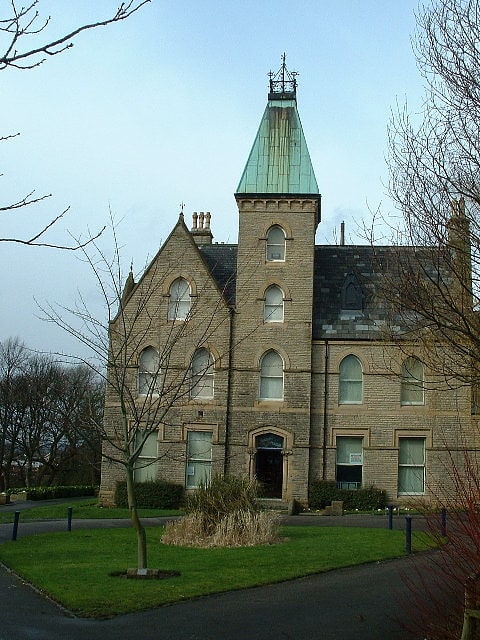
Museum. Bagshaw Museum is a local museum in the town of Batley, West Yorkshire. Situated in Wilton Park, the elaborate Gothic Revival mansion was converted into a museum by Walter Bagshaw in 1911. Originally called the Wilton Park Museum, it was renamed after Bagshaw following his death in 1927.
Bagshaw's initial collection was expanded with subsequent donations from Violet Bagshaw and orientalist John Hilditch, and today comprises an eclectic set of antiquities and ethnographic objects. Unusually for a local museum, it has a dedicated Egyptology gallery, including a replica mummy reconstructed from an authentic Egyptian death mask. It also holds a substantial collection of Asian textiles, reflecting Batley's historical ties to the textile industry and significant South Asian community. A Francis Bacon painting (Figure Study II), today valued at between £19.5 million and £60 million, was donated to the museum in the 1950s, but was transferred to Huddersfield Art Gallery in the 1970s.
The museum is currently owned and operated by Kirklees Council, but owing to local government budget cuts, its future is uncertain.[3]
Address: Woodlands Road, WF17 0AS Batley
Wilton Park

Wilton Park is a public park located in Batley, West Yorkshire, England.
Opened to the public in 1909 in the grounds of an old mansion (which now serves as the Bagshaw Museum) by the Batley Corporation, the park now serves the whole of the town.
The park contains a lake, formal gardens, a large area of natural woodland and open fields. Facilities include bowling greens, tennis courts and a paddling pool. A railway line once ran through the park. Despite being closed many years ago, its path is still evident, as is the bridge which lies directly in front of the park's main entrance.[4]
Address: Bradford Road, WF17 0AS Kirklees
St Mary in the Wood Church
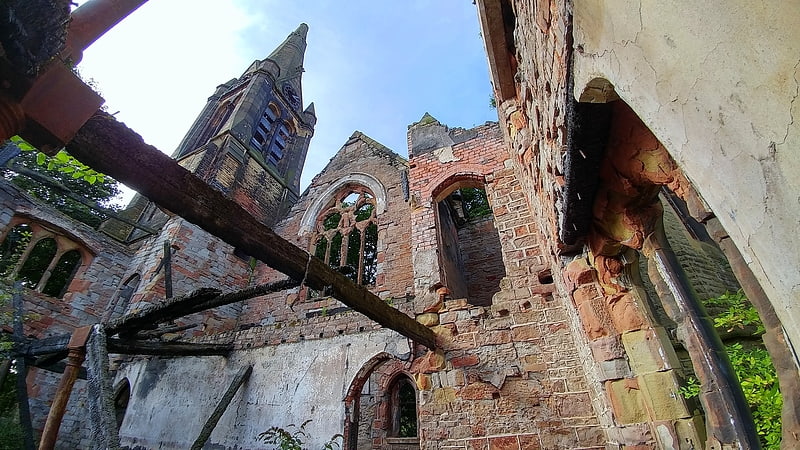
St Mary in the Wood Church is a redundant and former Church of England Parish church in Morley, West Yorkshire, England. It dates from the 19th century and was built in 1878. The former church is situated on Troy Road and Commercial Street north of the town. The church became redundant in the late 20th century and sat derelict until 2010. When a fire erupted and destroyed the church with only the spire surviving and burnt out parts of the former building. The church congregation is still active although meeting at a new place of worship on Commercial Street further south of the old church in a chapel.[5]
Carlinghow
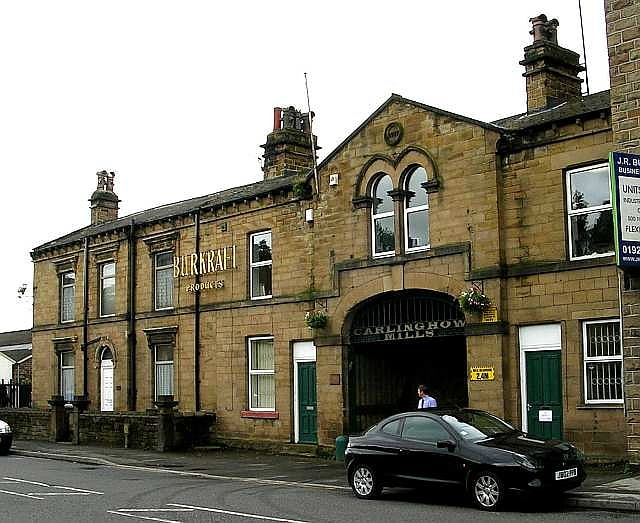
Carlinghow is a district of Batley, West Yorkshire, England.
It is west of Batley town centre, and stretches up towards White Lee and Birstall, along Carlinghow Lane and Bradford Road.
The name means "the hill or burial mound of the "Witch", or "Hag"", as in an old woman, probably a soothsayer. A 'Carle' in Scots is a commoner, a husband or in a derogatory sense, a churl or male of low birth. The name 'Carline', 'Cairlin', Carlin, 'Cyarlin', 'Kerlin' or 'Kerl' was also used in Lowland Scots as a derogatory term for an old woman, meaning an 'old hag'. It is a corruption or equivalent of the Gaelic word "Cailleach", meaning a witch or the 'old Hag', the Goddess of Winter. (A "how" means a mound, the same as a "low", often the last resting place of some ancient person of noble ranking.
It has been suggested in some quarters that the rocky outcrop, which is supposedly the place from where Carlinghow derives its name, known locally as "The Outies", was in ancient times a Druidic settlement, encompassing a sacred oak grove. Oak trees are still plentiful along the banks of the hillside, as are holly bushes, which were also sacred to the Drudic Bards of Iron Age Celtic Britain. It was in this area where the Druids once ruled which is why many of the field names have a reference to the sun and oaks. It is this area which catches the first rays of the sun on a morning. Nearby waterway the Batley Beck, a tributary of the River Calder runs through Carlinghow, winding parallel along the course Bradford Road.
Carlinghow used to have a station on a branch line that ran northwards from Batley to Birstall. The railway itself opened in 1852, with Carlinghow station being opened in 1872. Competition from Leeds New Line trains at Birstall and electric trams meant that the line closed to passengers as a wartime economy measure in December 1916, but the passenger trains were never restarted. The line remained open for freight until 1962.
Batley General Hospital was located on Carlinghow Hill. The hospital was funded by the wealthy inhabitants of the area and was founded in 1878, and opening to practice in 1881. It lasted for just over 100 years after finally being closed in 1988.
In the area around Summerbridge Close was once Carlinghow Old Hall, an Elizabethan Manor House, a timber-framed building reputed to have been the home of the Eland family in the later Middle Ages. According to Sheard's book, Records of Batley, it was built by Robert Eland, who died in 1521. The style of the timbering also suggests a 16th-century date, and there was, in 1968, a loose date-stone on site inscribed with the year 1505.
All that survived in the late 1960s, when the Hall was recorded in detail before its demolition, was a two-storey, two-bay timber-framed range with stone walling to the ground floor, and diagonal timber ‘stud’ walling with a stone slate infill (partly replaced by bricks) at first-floor level.
The ground floor stone walling was an original feature of the building (there were no peg holes or mortices to show that it replaced earlier timbering), though the windows in it were timber-mullioned. The first-floor windows projected from the walls.
A drawing of the Hall, published in Sheard's book in 1894, shows that the building was no more extensive at that date than it was in the 1960s, but what survived then was presumably only the 'solar' wing of a once much bigger 'gentry house'.
Carlinghow Lane is a gradual hill.
Batley Community Fire Station was at Carlinghow, but this and Dewsbury Fire Station were closed in August 2015 when a combined fire station was opened up on Carlton Road in Dewsbury. The Wilton council estate and Wilton Park, locally known as Batley Park, are both in the area.[6]
Batley Carr
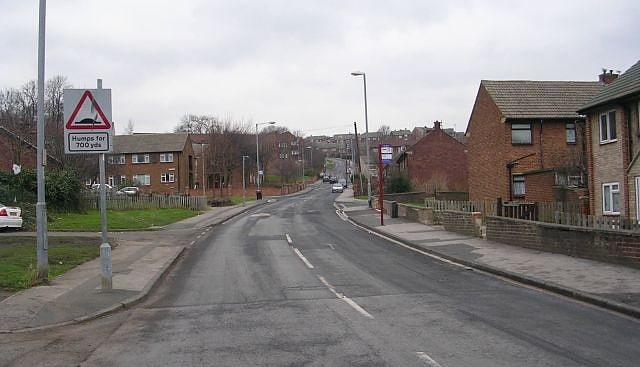
Batley Carr, West Yorkshire, England is a district partly in Dewsbury and partly in Batley, on the way to Dewsbury, along the A652, Bradford Road. Historically part of the West Riding of Yorkshire, the population is about 3,740. Crime is around the national average.
Batley Carr housed the workers from the mills of Dewsbury, Batley and Batley Carr. As the settlement expanded, with the growth of textiles, there was a necessity for its own railway station (Staincliffe and Batley Carr railway station). The red brick station master's house still stands but is now a private residence.
However, Batley Carr has since dwindled in size and now only has a post office, a few shops (mainly takeaways) and some remaining factories including the British Beds haulage depot. It is near the nightclub 'The Frontier'. Public houses and working men's clubs are still popular.
Shannon Matthews, who disappeared from Dewsbury Moor on 19 February 2008, was found alive on 14 March 2008 in Lidgate Gardens, Batley Carr.[7]
The Gables Cattery
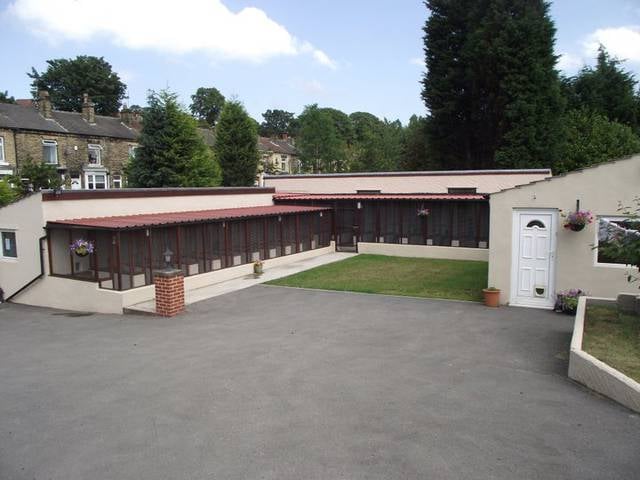
Address: The Gables, France Street, Soothill, Batley
Morley Tunnel
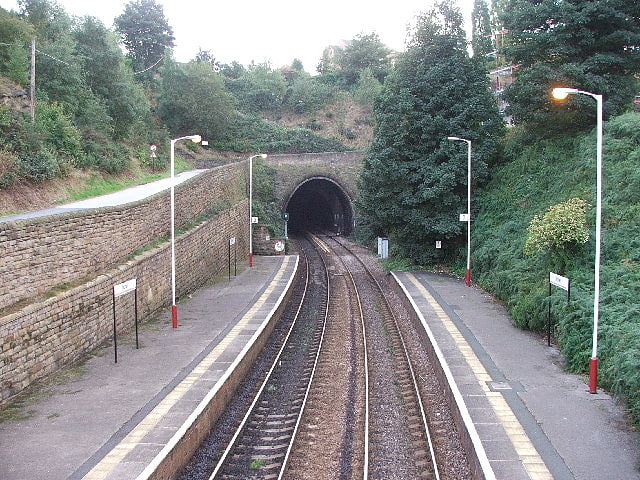
Tunnel in Morley, England. Morley Tunnel is a railway tunnel in West Yorkshire, England, situated between Morley and Batley railway stations on the Huddersfield line. From its northern end, it extends 3,369 yards, passing beneath Morley town centre, to its southern end.[8]